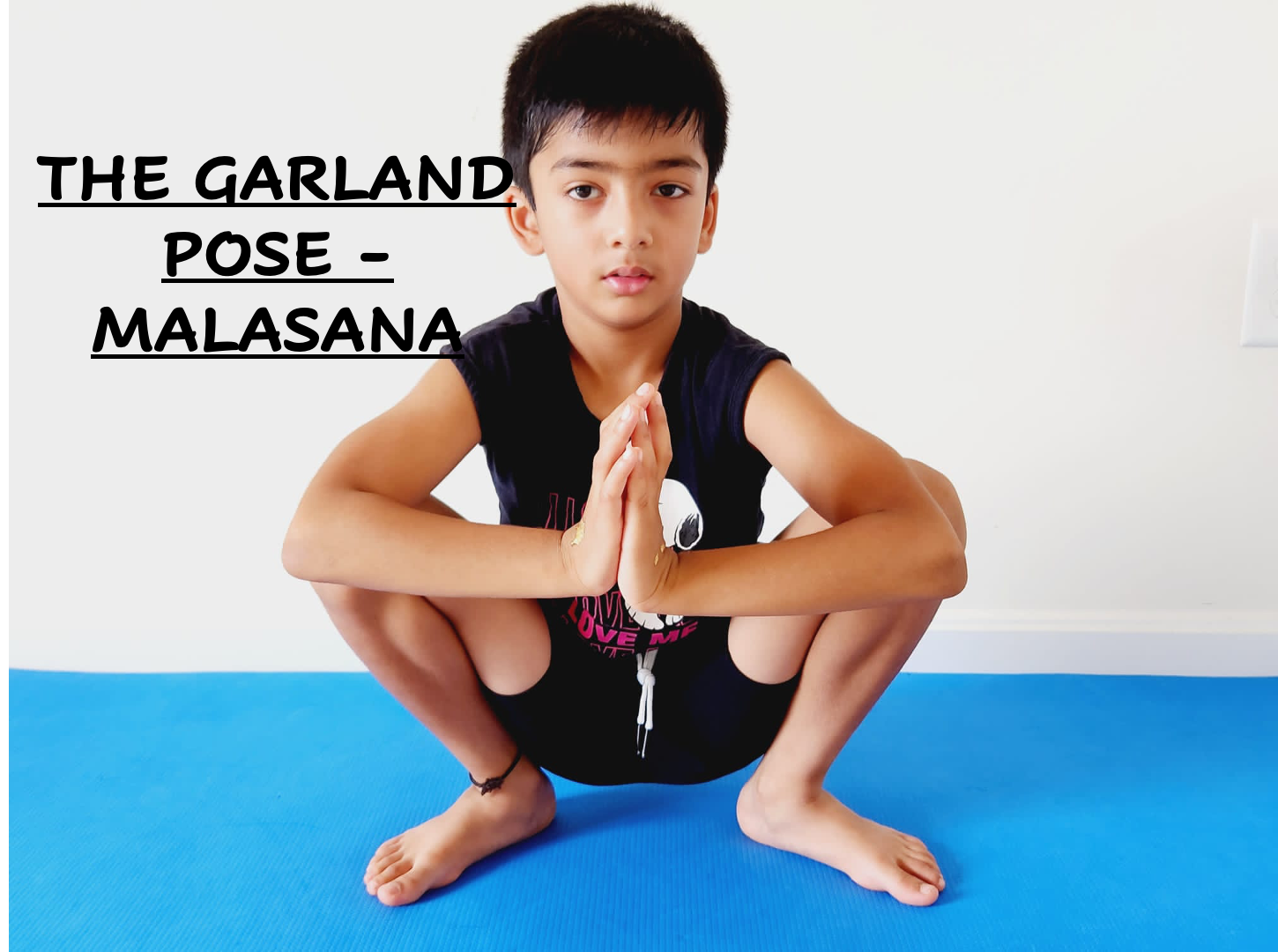GARLAND POSE | MALASANA
Malasana is also known as garland pose or squat pose.
Malasana combines the Sanskrit words “Mala” and “asana”, which both mean a garland or necklace. The three asanas that prepare you for malasana are tadasana, naukasana and padhastasana. After doing malasana, we can do any yoga asana except chakrasana, halasana and plank. In addition, there are some variations of malasana, which involve use of a chair or a wall for support.
A squat seems like a very simple pose, but it gives many people a lot of trouble. The concept and the instructions are easy enough, but it can ben very uncomfortable position for those whose bodies have gotten accustomed to sitting in chairs.
If you interact with small children, you’ll notice that they pop a squat without a second thought. As we get older, we often move away from this very natural way of sitting. We’re introduced to desks and chairs, and the more time we spend in them, the less agile our bodies become. At the same time, we’re distancing ourselves from our close relationship with the Earth. Squatting grounds our bodies and helps us reconnect to a child’s perspective and flexibility.
Understanding the reasons to squat is one thing but taking up the practice is quite another. It can feel awkward or even painful if you are out of practice, but with the right alignment cues and props, you’ll soon be hunkering down more easily.
STEP BY STEP
- come to stand with your feet about mat’s width apart
- bend the knees and lower your butt toward the floor to come into a squat
- it’s natural for your toes to want to turn out and that’s OK, but don’t overdo it. Eventually, you’re working toward keep the feet closer to parallel
- take your upper arms inside your knees and bend the elbows to bring the palms together into anjali mudra (prayer position)
- with hands to your heart center in anjali mudra, see if you can allow your thumbs to touch your sternum as if to help keep the chest lifted. continue pressing upper arms into thighs and thighs into upper arm to stay engaged
- keep your spine straight, your butt moving toward the floor and your shoulders relaxed away from your ears
- stay here for five breaths, then straighten the legs to come out. you can come directly into a forward fold if you like
- try repeating the pose three time to take full advantage of getting warmed up. If you are practicing at home it’s fine to do some other poses in between your squats
DURATIONS OF HOLD
- Beginners : 10 – 20 seconds
- Intermediate : 20 – 40 seconds
- Advanced: 1 minute – 5 minutes
BENEFITS
Garland Pose opens the hips and groins as it stretches and strengthens the feet and ankles. White squatting comes naturally to children and is used as a resting position in many places on Earth, most adults in the First World have gotten out of the habit. So fat out of the habit, in fact, that they find squatting extremely uncomfortable for their hips and feet. Garland Pose is an effective way to counter the tightness you get from spending too much time sitting in chairs.
BE MINDFUL
Malasana is generally safe for all.
- remember to practice this asana with an empty stomach. so it is better if you perform this in the morning on an empty stomach, or you can do it by keeping a gap of atleast 4 hours after a meal
- while doing this yoga, do not put your entire weight on your heels or toes. This is not good for your feet. Instead, you need to spread the whole body weight evenly throughout your whole feet
- keep in mind to perform it for a limited time and do it gently, do not overstrain yourself in a single session
- get into the position of this yoga gently and slowly
- if you have chronic knee or lower back pain, do not perform malasana, as it can be painful
- if you underwent any recent injury on your hips, knees, back, feet or ankle, it would be better if you do not practice this asana at all
TIPS FOR BEGINNERS
- if you can’t lower all the way down, try taking your feet a little wider
- if you heels come off the floor, roll up a blanket and place it under them for support
- if you can’t hold the pose, take a block (stack several if necessary) under your butt so you are sitting on the blocks
DO YOU KNOW ?
A healthy bowel movement is a sign of good health and is crucial for a healthy digestive system. Passing the stool at least once in the day preferable in the morning indicates that your intenal system is working well. But a regular bowel movement is not easy for all. Many people face problems in regularly passing the stool. This not only makes them feel uncomfortable but also leads to several health issues. Constipation is the reason for numerous skin and health related issues and the answer to this problem could be yoga. Performing Malasana or Garland pose daily in the morning for 30 seconds to 1 minute can help your colon. This will ensure daily passage of stool and also increase the blood circulation in the pelvic region.
